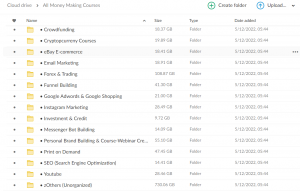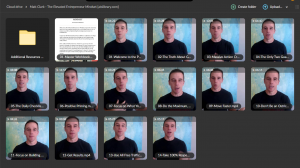Foodtography School by Sarah Crawford
Foodtography School by Sarah Crawford is a comprehensive course focused on teaching the art of food photography. Created by food blogger and photographer Sarah Crawford, the course is designed to help both beginners and seasoned photographers enhance their skills in capturing visually appealing food images. It covers a wide range of topics, from lighting techniques to styling and editing.
Who Is This Course For:
- Food Bloggers: Those looking to improve the quality of their photos to enhance their blogs or social media presence.
- Aspiring Food Photographers: Individuals aiming to break into the food photography industry.
- Chefs and Restaurant Owners: Anyone in the food industry wanting to capture mouth-watering images of their dishes.
- Home Cooks: Enthusiasts who want to elevate the presentation of their home-cooked meals through photography.
What You’ll Learn:
- Understanding Lighting
- Techniques for using natural light to create stunning food photos.
- How to manipulate artificial light sources to achieve the desired effect.
- Identifying the best angles for photographing food in different lighting conditions.
- Food Styling Techniques
- How to style food for optimal presentation.
- The art of layering textures, colors, and props to make food look more appetizing.
- Tips for working with different types of food, including challenging textures like liquids or shiny surfaces.
- Photography Equipment
- Recommendations on the best camera gear for food photography.
- How to use basic photography tools, including tripods and reflectors, to improve photo quality.
- Smartphone photography tips for those working without professional camera equipment.
- Camera Settings and Composition
- A deep dive into the most important camera settings for food photography, including aperture, ISO, and shutter speed.
- Composition techniques like the rule of thirds and leading lines to make food photos stand out.
- How to create depth and focus in your images to draw attention to the main subject.
- Editing and Post-Processing
- Step-by-step guides for editing food photos using popular software like Lightroom and Photoshop.
- Color correction, sharpening, and retouching techniques to enhance the final image.
- Tips for maintaining a cohesive editing style across your portfolio.
- Building a Food Photography Portfolio
- How to create a portfolio that attracts clients or builds your online presence.
- Strategies for using Instagram and other social media platforms to showcase your food photography work.
- Tips on reaching out to potential clients and turning your passion into a business.
Course Features:
- On-Demand Video Lessons: Access to a library of video tutorials that cover each aspect of food photography.
- Downloadable Resources: Worksheets, guides, and checklists that help you apply the lessons to real-world shoots.
- Assignments and Projects: Hands-on projects designed to help you practice and perfect your skills, with feedback from Sarah Crawford.
- Lifetime Access: Once enrolled, you have lifetime access to the course materials, including updates.
Benefits of the Course:
- Comprehensive Curriculum: The course covers everything from basic photography principles to advanced styling and editing techniques.
- Practical Application: Students can immediately apply what they learn through guided projects and real-world assignments.
- Professional Growth: The course helps participants not only take beautiful photos but also build a portfolio and establish themselves in the industry.
Potential Drawbacks:
- Equipment Requirements: While there are tips for smartphone photography, those wanting to fully participate in the advanced sections may need to invest in professional camera gear.
- Time Commitment: Although the course is on-demand, it requires a commitment to practice and apply the skills taught, which could be time-consuming for busy professionals.
Conclusion:
Foodtography School by Sarah Crawford offers a well-rounded education in food photography, from the fundamentals to advanced techniques. Whether you’re a food blogger, an aspiring food photographer, or someone in the food industry, this course provides the tools and knowledge to take your food photography to the next level.


 Over 1.000 comments
Over 1.000 comments










